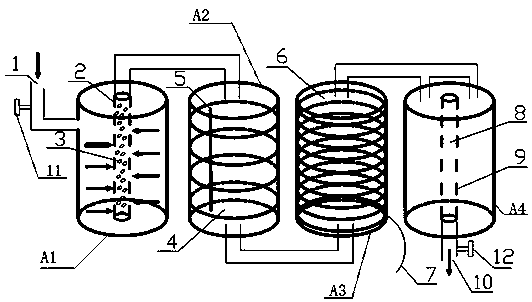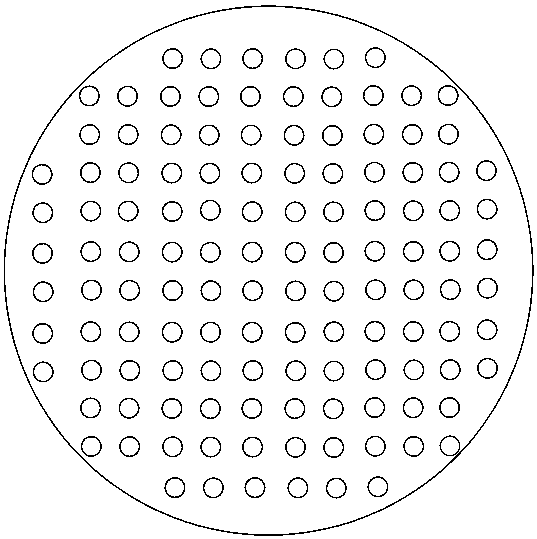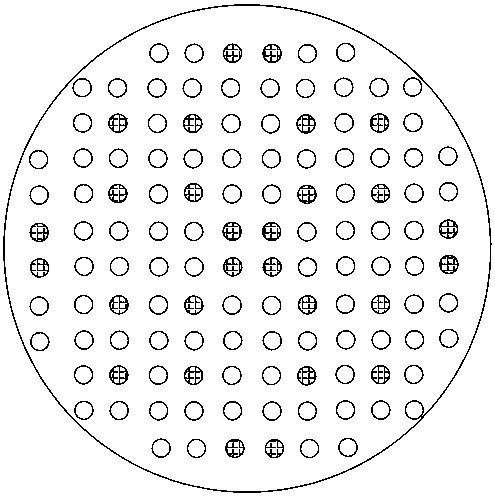Combined device for organic chemical laboratory wastewater treatment
A wastewater treatment and combined device technology, applied in the field of water treatment, can solve problems such as deterioration, difficult recovery, and weakened carbon adsorption capacity, and achieve the effects of reducing processing load, simple module structure, and convenient use
- Summary
- Abstract
- Description
- Claims
- Application Information
AI Technical Summary
Problems solved by technology
Method used
Image
Examples
Embodiment Construction
[0034] The present invention will be specifically described below in conjunction with the accompanying drawings.
[0035] as attached figure 1 It is the overall structure diagram of the present invention. As can be seen from the figure, a combined device for organic chemistry laboratory wastewater treatment includes sequentially connected macroporous resin adsorption devices, iron-carbon micro-electrolysis devices, BDD electrolysis devices and photocatalytic devices. ; The macroporous resin adsorption device, the iron-carbon micro-electrolysis device, the BDD electrolysis device and the photocatalysis device are all in the shape of a cylinder and placed on the same horizontal plane. For the sake of aesthetics and convenience in installation, the above four devices adopt cylinders of the same size to be arranged side by side as spaces for treating waste water.
[0036] In order to show clearly, in the figure, the iron-carbon micro-electrolysis device specifically adopts four c...
PUM
 Login to View More
Login to View More Abstract
Description
Claims
Application Information
 Login to View More
Login to View More - R&D
- Intellectual Property
- Life Sciences
- Materials
- Tech Scout
- Unparalleled Data Quality
- Higher Quality Content
- 60% Fewer Hallucinations
Browse by: Latest US Patents, China's latest patents, Technical Efficacy Thesaurus, Application Domain, Technology Topic, Popular Technical Reports.
© 2025 PatSnap. All rights reserved.Legal|Privacy policy|Modern Slavery Act Transparency Statement|Sitemap|About US| Contact US: help@patsnap.com



